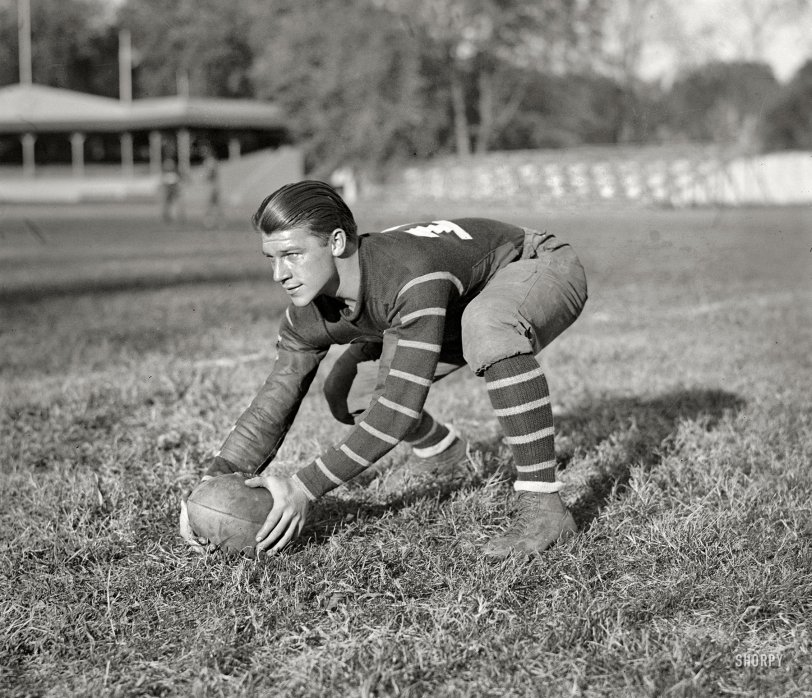


Framed or unframed, desk size to sofa size, printed by us in Arizona and Alabama since 2007. Explore now.
Shorpy is funded by you. Patreon contributors get an ad-free experience.
Learn more.

- Baldwin 62303
- Baldwin VO-1000
- Cold
- No expense spared
- Tough Guys
- Lost in Toyland
- And without gloves
- If I were a blindfolded time traveler
- Smoke Consumer Also Cooks
- Oh that stove!
- Possibly still there?
- What?!?
- $100 Reward
- Freeze Frame
- Texas Flyer wanted
- Just a Year Too Soon
- WWII -- Replacing men with women at the railroad crossing.
- Yes, Icing
- You kids drive me nuts!
- NOT An Easy Job
- I wonder
- Just add window boxes
- Icing Platform?
- Indiana Harbor Belt abides
- Freezing haze
- Corrections (for those who care)
- C&NW at Nelson
- Fallen Flags
- A dangerous job made worse
- Water Stop
Print Emporium
Handsome Hoya: 1925

Washington, D.C., 1925. "Grigsby, Georgetown." Hilltop star center Claude Grigsby, "a well-built, iron-muscled lad from Chicago," according to the Washington Post. National Photo Company glass negative. View full size.
Tough, sure
but if he faced off against a modern defensive line, there'd be nothing left but a grease spot (from his hair, of course).
My how the game has changed
I checked Google to see the average size of today's college offensive linemen. Here is what I found:
"For a fairly major Division I-A (FBS) team offensive tackles range in size from about 6'4" to 6'8" and about 290-350 lbs. An offensive guard (interior lineman) will range from about 6'0" to 6'5" and about 280-330 lbs. A center will be at about 6'1" to 6'4" and 280-315 lbs."
Those early players may have been much smaller, but boy I bet they were TOUGH!!!
Two Years Later
Mr. Grigsby played center for the 1927 College Football All-America team. He was elected to the Georgetown University Athletic Hall of Fame in 1953.
How many miles could he go
Before changing the oil in his hair?
























On Shorpy:
Today’s Top 5